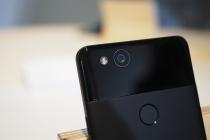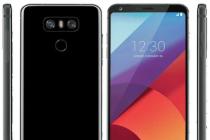Not so long ago, when the grass was still green and dinosaurs walked the earth, the ability to pause music playback and take a call, and then return to listening and continue from the same place made us excited. And about such things as the amount of RAM or its presence in general, only a few thought. But before there was no electricity, and the construction of railways completely led people (and especially coachmen) into bewilderment. With the development of technology, human needs have increased, and our pocket assistant is no exception.
A few weeks earlier, information appeared about two smartphones from Chinese manufacturing companies, LeEco and Oppo, with eight gigabytes of RAM on board. Last time we considered the need for multi-core, and Sergey wrote, the topic of which I will analyze in more detail.
background
The speed and smoothness of a smartphone depends on several components, the most important of which are the processor, video accelerator, OS and its optimization, as well as RAM. It is the latter that will be discussed today.
RAM in a smartphone, like in a computer, is buffered, in other words, it is used for short-term data storage, ensuring the functioning of the software. Unlike constant, it is volatile and faster. It is an important component of the hardware ecosystem, working in tandem with other components located on the SoC. RAM can rightfully be considered the next key to performance after the processor. It is this factor that is the main reason for their close interaction.
Typically, the exchange of data between the CPU and RAM occurs with the participation of cache memory. The cache memory is a kind of intermediary between these components. Pumping data from the RAM to the processor and prioritizing it, it returns them back to RAM, but in a modified form. In reality, everything is not so difficult.
RAM can be divided into several sections: system, user and available.
- System - the basis of the OS. This includes system software, including service modules and add-ons preinstalled by the manufacturer, as well as system modification (proprietary interface). By the way, the latter, in comparison with the “naked” Android, often takes up two to three times more space in RAM.
- User - the memory available after the device boots. There is a deliberately false opinion that this memory is all and completely available for subsequent use. Quite often, manufacturers add add-ons to the firmware (at best, periodically activated), which cannot be cleared using conventional task killers. In addition, such actions have rather negative consequences, given that such utilities often use processor cycles. This is another reason for their inefficiency. Add here the autoloading of your applications, including various instant messengers (of which many have several), the optimization of which leaves much to be desired, and you will get an answer to the main question.
- Available - System reserved memory. The OS initially “books” a certain amount of RAM to prevent problematic situations, rational use of memory and quickly launch new applications.
If you look at the history of the development of RAM, we can assume that the main motto of manufacturers was, is and will be:
Bigger, better, faster.
To paraphrase: “quantity, quality, speed”. And this trend can not but rejoice. However, even here there are some peculiarities.
autonomy
The increase in the amount of RAM is interconnected with the autonomy of the device. Unfortunately, in this particular example, this is a problem. And due to the fact that more memory is available to applications, the number of background processes increases accordingly. Every action leads to a consequence. In our case, the increase in these processes adversely affects not only the duration of the battery, but also the speed of work.
OS and optimization
Android. To begin with, the OS itself is a stripped-down and modified version of Linux. If you imagine the system as architectural structures, then above the Linux level is the application infrastructure layer, which contains a virtual machine, software APIs, extensions, and the like. Here, the method of compiling software into bytecode is used, after which the result is converted into a DEX file contained in the APK archive of the application. These files are in turn used by Dalvik (Java Virtual Machine). Later replaced by ART.
The key difference between ART and Dalvik is the way applications are compiled. Dalvik does this during their startup, that is, in real time, which in turn heavily loads the processor. With the advent of ART, the developers set a goal to fix this and some other serious problems by changing the concept of implementation. ART converts the code once, when installing the application. Consequently, the subsequent launch of applications is much faster. At least that was the intention of the update, but real tests show a different picture. But with the increase in the size of the application, due to which, conceptually, loading and playback should be accelerated, they did an excellent job.
Also, ART is directly related to RAM. Considering the changes described above, the previously converted code speeds up the boot process, primarily due to the negligible consumption of RAM. And at the same time, manufacturers continue to increase its quantity.

O times! Oh manners!
Memory type
The golden rule “not quantity, but quality” applies here as well. A newer type of RAM, such as LPDDR4 with 2 GB of memory, will perform much better (in terms of performance) than LPDDR3 with 4 GB. It's all about the use of newer technologies, including excellent bus frequency, reduced process technology, and the like, which allows you to achieve an increase in speed and smoothness compared to more capacious, but older counterparts. However, the main factor in the continuation of the RAM race can be considered the transition to the 64-bit version, which allowed us to cross the 4 GB limit. Now, depending on the system, this indicator is multiplied by double-digit, and even much larger numbers.
Output
A few words are enough: “There is never a lot of RAM.” At least that's what most people think. It is hard to disagree with them, if you do not take into account several important factors. The first and most important is autonomy. The second is the irresponsibility of the developers. Now there is another reason - "zapadlo" optimization. "What for?" they ask. Indeed, over time, the amount of RAM only multiplies, respectively, the multitasking mode improves and the volume of background processes increases. Now you don't have to worry about such things. However, users think differently. And the incompatibility problem is an optimization problem. But apart from the user, this is of no interest to anyone. Neither the manufacturer nor the developers. I exaggerate, of course, there is always an exception. However, the “majority rule” is also ubiquitous. They can be understood too. The chip with flagship devices eventually found a response in the soul of even the most ardent haters. So why stop the conveyor? All that is needed now is to throw up firewood from time to time and collect fruits.
But what about RAM? The answer to the main, quantitative, question is system architecture and application optimization. These are the determining factors. To date, the best option is 3-4 GB of the fourth class.
If you find an error, please highlight a piece of text and click Ctrl+Enter.














